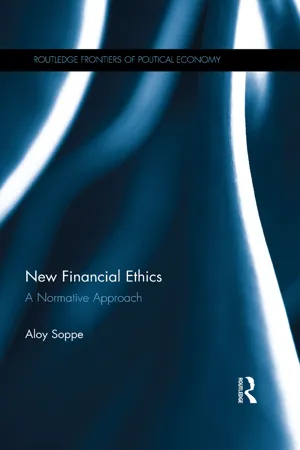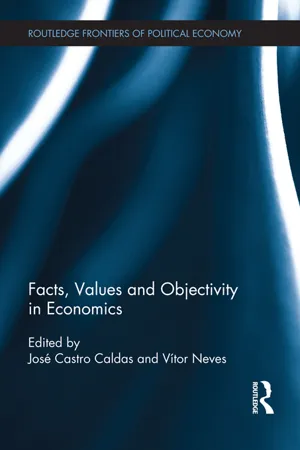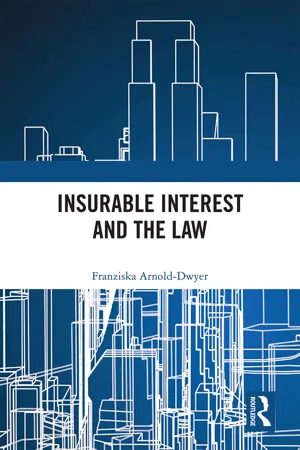Economics
Moral Hazard Examples
Moral hazard examples include situations where individuals or entities take on greater risks because they are insulated from the potential negative consequences. In the context of insurance, this can manifest as policyholders being less cautious because they know they are protected. In financial markets, moral hazard can arise when banks or other institutions take on excessive risks due to the expectation of a government bailout.
Written by Perlego with AI-assistance
Related key terms
7 Key excerpts on "Moral Hazard Examples"
- eBook - ePub
New Financial Ethics
A Normative Approach
- Aloy Soppe(Author)
- 2016(Publication Date)
- Routledge(Publisher)
Moral hazard is a form of opportunistic behaviour in which an agent seeks to strengthen their self-interest at the expense of another party. Usually, moral hazard starts with an information asymmetry in a specific process. Practice shows that moral hazard particularly occurs when a person or group of persons do not bear the full risk of their financial acting. In this case, the risk – partly – belongs to another party through, for example, warranties or other legal positions. When actors themselves do not carry all risk involved in a financial act or process, moral hazard readily arises leading to, for example, individuals or investors taking excessive risks. 2 Examples include banks that are ‘too big to fail’, and are therefore expected to be rescued by the government when things go wrong, such as has happened in financial crises. The same applies to the deposit insurance system for banks. Careful selection of banks becomes less important for customers when the government safeguards them through deposit insurance – see, for example, the European Icesave affair in 2008. Moral hazards readily lead to a paradox. On the one hand (financial), markets need protection and warranties to ensure their effective operation. On the other hand, these safeguards should not exceed a certain threshold otherwise those very warranties create moral hazard that leads to imbalances that may cause a crash. An important manifestation of moral hazard is so-called adverse selection. Adverse selection is the problem where one party has an informational advantage over the other party prior to the transaction. In this situation, rationally acting agents can easily misuse information that the other party does not yet possess. Take, for example, the purchase of a travel insurance policy. Careless people will probably be more inclined to purchase a travel insurance policy than those who are very careful and better protect their belongings when travelling - eBook - ePub
- José Castro Caldas, Vítor Neves(Authors)
- 2012(Publication Date)
- Routledge(Publisher)
This concept arguably poses the most interesting questions for economic discourse. Mainstream economic discourse normally avoids discussions of morals as being outside the purview of economics. Akerlof and Shiller depart from this approach by bringing the moral concept of fairness into the discourse. Nevertheless, they maintain the strict division between rationality and morals. But moral hazard is a concept which is employed in mainstream analysis which focuses on rational behaviour, usually with respect to information asymmetry. It is opportunistic behaviour, i.e. behaviour which takes advantage of an opportunity for personal benefit even if it is at the expense of others. 2 But is it immoral? The ambiguity of moral hazard as a concept arises from the possibility that it can be captured as rational behaviour. As a case study of how moral sentiments are treated in economic theory, we will explore the concept of moral hazard in relation to the financial crisis and show how that affects the nature of the policy response. Concern with moral hazard was central to the way in which the authorities responded initially to the onset of crisis. But first we set out the much broader context of the relation between morals, ethics and economics, exploring how far they can in fact be kept separate. We explore the background to the history of economics as a moral science. There is an extensive literature about (moral) values in economic theory (see e.g. Brennan and Waterman 1994; Peil and van Staveren 2009). Morals can be identified in economics at a variety of levels, but the way in which they appear in economic theory depends on the methodological framework: the closed-system rational-choice framework or any of the open-system political economy frameworks. As a result, the literature has involved a significant amount of talking at cross purposes, not least because of the different meanings attached to terms in the different frameworks - eBook - ePub
The Soulful Science
What Economists Really Do and Why It Matters - Revised Edition
- Diane Coyle(Author)
- 2009(Publication Date)
- Princeton University Press(Publisher)
There is a mirror problem which arises with regard to behavior after the transaction. We might start out with the same information but afterwards there’s an asymmetry arising from the fact that I can’t monitor your behavior. This is known as moral hazard. Moral hazard describes a divergence in incentives between the two parties to a transaction. In the case of insurance, buying cover for your household goods might make you careless about taking care of them. Insurers respond by charging a lower premium for people willing to accept a larger “excess,” the amount of loss they must cover for themselves before making a claim on the policy. Countries which know the IMF will bail them out of a financial crisis might be less careful about running stable macroeconomic policies. Banks that know they will be bailed out by the government, in order to protect depositors, will have an incentive to make too many risky loans: in fact, far, far too many, so that the resulting losses will be large enough to induce a bailout rather than so small that they can be covered by a reduced dividend to shareholders. 5 Moral hazard can also operate in employment relationships when an employer pays a worker or contractor an hourly wage but is unable to check how much effort they put into the task—for example, should new software take a contractor two weeks or two months or two years to write and instal? There’s every incentive for the contractor to take life at an easy pace and spin the work out for as long as possible. By definition, what can’t be observed or monitored can’t be included in the terms of the contract - eBook - ePub
Corporate Risk Management
Theories and Applications
- Georges Dionne(Author)
- 2019(Publication Date)
- Wiley(Publisher)
Obviously, entrepreneurs who finance 100% of a project have very strong incentives to maximize the expected profits and to reduce the default probability. In contrast, when a project is financed by third parties with partial guarantees, incentives may be weaker, particularly when the managers' actions are not perfectly observable by creditors. This incentive problem is called ex ante moral hazard. Moral hazard is present when the prevention actions of one party (business, individual, worker, or agent) are not observable by another party associated with the risks of a contract (bank, insurance company, employer, or principal), but may suffer the financial consequences associated with these risks. Moral hazard is often present in debt contracts, insurance contracts, and in the relationship between the board of a company and the officers. Moral hazard was present in securitization activities of banks before and during the financial crisis because banks had no incentives to monitor the credit risk of loans, particularly that of mortgage subprime loans (Dionne and Malekan, 2017; Dionne and Harchaoui, 2008; Malekan and Dionne, 2014; Keys et al, 2009, 2010; Keys, Seru, and Vig, 2012; Bubb and Kaufman, 2014).In investment projects, the entrepreneur's action or effort may move the revenue frequency to the right, or the revenue distribution function downward. As Figures 10.1 and 10.2 illustrate, the agent increases the expected value of revenues by exerting more effort, which can be represented by instead of .Movement of revenue frequency to the right by making more effort (e) to obtain higher expected revenues conditional on higher effort.FIGURE 10.1The lender's problem is to write a loan contract that maximizes the entrepreneur's incentive to make the greatest effort. This is because if the project or the business fails, both parties will lose.Downward movement of the revenue distribution function by making more effort (e).FIGURE 10.2We are not addressing the question of collateral although it is very important. In general, for commercial loans, the collateral requested may reach a large percentage of the loan amount. It is clear that when the collateral is 100%, the problem of incentives no longer arises. But incentives are generally less than those under full information with a lower collateral under moral hazard.10.1 OPTIMAL FINANCIAL CONTRACTS AND MORAL HAZARD
Suppose that the stakeholders are risk neutral. We are interested in financial contracts in the presence of information asymmetry. The agent (borrower) may influence the result of the project by actions that cannot be observed by the principal (lender). A more detailed description of the contracts studied is presented in Appendix A - eBook - ePub
Policy Analysis
Concepts and Practice
- David L. Weimer, Aidan R. Vining(Authors)
- 2017(Publication Date)
- Routledge(Publisher)
hidden information . Within each category, some individuals will have either higher-than-average or lower-than-average probabilities of loss. Those with higher-than-average probabilities will tend to find the insurance attractive; those with lower-than-average probabilities will not. As more of the former buy policies and more of the latter decline to buy, the average for the group must rise. This in turn drives the insurance price higher above the actuarially fair level for the group as a whole. Eventually, only those with the highest probabilities choose to remain covered.Insurers can sometimes limit adverse selection by offering inclusive policies to groups such as company employees, for which insurance is only one attraction of membership. In general, however, the presence of information asymmetries tends to keep the prices of many types of insurance well above actuarially fair levels for many potential buyers. One rationale for public insurance programs is that they can be made mandatory so that adverse selection can be avoided.Moral hazard refers to the reduced incentive that insurees have to prevent compensable losses.19 If fully insured, then they can make themselves better off, and perhaps society in the aggregate worse off, by spending less of their own resources on loss prevention than they would in the absence of insurance.20 Actual reductions in loss protection are more likely the more costly it is for insurers to monitor behavior. It is thus sometimes referred to as the problem of hidden action . Insurers often try to limit moral hazard by requiring insurees to pay a fraction of the suffered loss through copayments.Note that moral hazard can also be useful in understanding increases in risk in many policy-relevant arenas outside of conventional insurance markets. For example, consider the implications of changes in the origination and holding of mortgages during the housing boom that ended in 2007. Historically, banks originated most mortgages and kept them as assets for an extended period. Consequently, they had a strong incentive to avoid mortgages with high risks of default because they bore the entire risk. However, the more recent introduction of pools of mortgages as financial instruments created a moral hazard that encouraged both banks and mortgage brokers to originate as many mortgages, including so-called sub-prime mortgages, as possible, because they could earn the origination fees and immediately pass along all their risk to the pool. As ownership of the pools was dispersed widely, and the risk of default was low as long as housing prices were rising, monitoring the quality of mortgages in the pool was a public good problem and undersupplied. This combination of moral hazard in origination and the public-good nature of monitoring set the stage for a severe financial crisis triggered by declining housing prices. - eBook - ePub
- Franziska Arnold-Dwyer(Author)
- 2020(Publication Date)
- Routledge(Publisher)
The moral hazard justification for the doctrine of insurable interest derives from the idea that an insured without any interest would stand to benefit from the destruction of, or damage to, the insured subject-matter without any personal loss or detriment which, in turn, might tempt him to bring about its destruction in order to gain the benefit of insurance. This Chapter examines the criticisms of the moral hazard justification drawing on empirical data, doctrinal legal analysis and case studies. In relation to property insurance, it will be argued that the relationship between insurable interest and moral hazard can be better understood if insurable interest is seen as a mechanism for aligning the interests of the insured and the insurer in keeping the insured subject-matter safe. The example of the US STOLI schemes highlights that moral hazard is a real concern in life insurance.Historical background and economic analysis
In Sadlers’ Company v Badcock Lord Hardwicke summarized the moral hazard issue as follows: “…if any person may insure, whether he has property or not, it may be a temptation to burn houses, to receive the benefit of the policy”, and “… the temptation to [destroy ships] has arisen from interest and no interest inserted in policies”.1 Similarly, it was thought that insuring the life of another person in whose life the insured had no interest could lead to the temptation to kill that person.2 From the Preamble of the MIA 1746 it is clear that one of the main mischiefs the Act sought to address was the deliberate destruction of insured ships and cargo by insureds without any interest:1 (1743) 2 Atk 554 (Ch) 556.2 R Merkin, ‘Gambling by Insurance – A Study of the Life Assurance Act 1774 ’ (1980) 9 Anglo-Am L R 331, 331–333.… the making of assurances, interest or no interest, or without further proof of interest than the policy, hath been productive of many pernicious practices, whereby a great number of ships, with their cargoes, have either been fraudulently lost and destroyed …(Emphasis added)Conversely, by limiting the application of s.1 of the MIA 1746 to British vessels and cargo, Parliament pursued a strategy of encouraging moral hazard in relation to foreign vessels: permitting wager policies on foreign vessels would encourage fraud and aggression against enemy ships as it would make such ships, if insured against capture by British subjects, attractive targets for ‘friendly’ British privateers.3 - eBook - ePub
- Weiying Zhang(Author)
- 2017(Publication Date)
- Routledge(Publisher)
11Moral hazard and corruptionThe most basic reason corruption occurs is asymmetric information about relevant actions. Theoretical research on asymmetric information of actions is called “principal-agent theory” or moral hazard theory.In Economics, any relationship where the behavior of one person influences the interests of another person can be called a principal-agent relationship. The person with private information is called the agent, and the person without private information is called the principal.There are four causes of the principal-agent issue: (1) A conflict exists between the interest of the principal and the agent; (2) there is asymmetric information and the principal has difficulty observing the agent’s behavior; (3) the agent is risk-averse; or (4) the agent’s capacity for liability is limited.Conflicts of interest alone might not be sufficient to cause the principal-agent problem. If the principal can fully observe the agent’s behavior, the agent is risk-neutral, or the agent’s capacity for responsibility is not limited, then the principal-agent problem can also easily be resolved.The primary issue in principal-agent theory research is the design of incentive contracts for the agent. Incentive contracts face a dilemma between incentives and insurance. The optimal contract must balance incentives and insurance.The optimal intensity of incentives is determined by four factors: (1) The degree output depending on the agent’s effort; (2) the degree of output uncertainty; (3) the degree of the agent’s risk aversion; and (4) the agent’s responsiveness to incentives.Comparisons of relative performance improve incentive contracts, but might also lead to agents colluding with or undermining each other.The contradiction between performance-based rewards and meritocracy means that incentive methods must be diversified. The “official standard” was actually homogenization of incentives. Not only did it severely distort resource allocation, it also harmed social harmony.
Learn about this page
Index pages curate the most relevant extracts from our library of academic textbooks. They’ve been created using an in-house natural language model (NLM), each adding context and meaning to key research topics.






